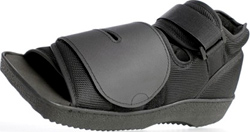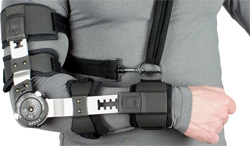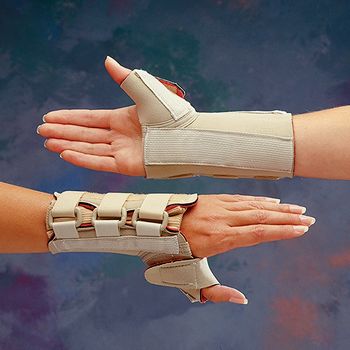

|
Services Post-Operative
Shoes • Elbow Braces
Post-operative shoes make it easy to recover from foot operations. These shoes allow you to have mobility, help you maintain your strength, keep dressing clean and toes dry, minimize the pressure on wounds for faster healing, and provide protection following post-operative procedures and forefoot trauma. These shoes offer an adjustable fit and are constructed with supportive materials to help you recover safely.
Elbow braces are designed to handle post-operative elbow arthroscopy, severe elbow strains, and ligament trauma.These braces will help restore the range of movement in the elbow joint following elbow surgery, elbow injury, or forearm surgery by immobilizing your elbow with adjustable ROM features; decreasing the usage of anti-inflammatory medications; decreasing pain symptoms; improving elbow joint function and improving post injury/post surgery recovery. Hand & Wrist Braces
Splints and braces. Splints and braces made of neoprene, metal and other materials are used in the treatment of arthritis, injuries or other conditions of the wrist and fingers. For example, a splint that immobilizes the wrist may be prescribed for nighttime use to relieve the tingling and numbness of carpal tunnel syndrome or to provide rest and support for arthritis in the wrist. Finger splints may be used to help fractured or dislocated fingers heal or to prevent deformities in fingers affected by rheumatoid arthritis. Splints and braces may be prefabricated or custom made by a hand therapist. Splints and braces are commonly used for the treatment of arthritis, injuries or other conditions of the wrist and fingers. They are typically made of neoprene, metal and other materials. A splint or brace can be used to immobilize the wrist and helps with relieving tingling and numbness of patients with carpal tunnel syndrome. It can also provide rest and support for arthritis in the wrist. In cases where there is a fracture or dislocated fingers, finger splints may be helpful with the healing process or prevent finger deformities caused by rheumatoid arthritis. Both splints and braces can be custom made or prefabricated by a hand therapist to accommodate the patients.
Medical walking boots are an essential part of recovery to the foot and ankle injury or after surgery. They are most commonly used for stress fractures, shin splints, broken foot or ankle bones and severe ankle sprains. Medical walking boots play an important role in protecting and immobilizing the foot, allowing weight to slowly be added onto the injured foot in order to have a successful and full recovery. After most of the surgeries that we perform, immobilization of the foot/ankle is required and the recovery time is unique to the types of surgery performed. For example, ligaments can take an average of 6 weeks to heal, so immobilizing the leg will keep the repair from spreading apart. As part of the rehabilitation process, we also allow increments of weight-bearing and motion in two cast phases and follow up with physical therapy to give back strength and balance to our patients.
Orthotics Uses
For example, a wedge inserted into the inner (medial) side of the sole of a shoe can be used to help support a flatfoot, thus reducing the risk of tendinitis. An ankle-foot brace can help relieve the pain of rheumatoid arthritis in the heel or ankle. A heel flare can be used to increase support and help prevent ankle sprains. Heel cushions can help absorb impact and relieve stress on the heel and ankle when you walk or run. The type of orthosis recommended by your doctor will depend on your symptoms, the underlying cause for those symptoms, and the shape of your feet. In some cases, your doctor may prescribe an insert or pad; in other cases, modifications to your shoes may be necessary. Although custom orthoses are considerably more expensive than off-the-shelf devices, they last much longer and provide more support or correction. In some cases, however, an over-the-counter device can be just as effective, particularly when combined with a stretching and exercise program. In the past, plaster molds of the foot were used to construct the custom-made orthosis. Now, computerized foot analysis is often used to develop orthoses that more accurately reflect the dynamics of your gait.
|






